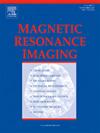A Bayesian CAIPIVAT approach with through-plane acceleration to enhance efficiency of simultaneously encoded slice acquisition in FMRI
IF 2
4区 医学
Q2 RADIOLOGY, NUCLEAR MEDICINE & MEDICAL IMAGING
引用次数: 0
Abstract
FMRI has been a safe medical imaging tool to study brain function by demonstrating the spatial and temporal changes in brain metabolism in recent decades. To capture brain functionality more efficiently, efforts focus on accelerating image acquisition acquired per unit of time that create each volume image without losing full anatomical structure. The Simultaneous Multi-Slice (SMS) technique provides a reconstruction method where multiple slices are acquired and aliased concurrently. Traditional imaging techniques such as SENSE and GRAPPA can reconstruct an image from less measured data but have their drawbacks. The Controlled Aliasing in Parallel Imaging (CAIPI) and view angle tilting (VAT) techniques achieve slice-wise image shift to decrease the influence of the geometry factor (g-factor) of coil sensitivities and prevent the singular problem of the design matrix. In this paper, a Bayesian CAIPIVAT approach for multi-coil separation of parallel encoded complex-valued slices (mSPECS-CAIPIVAT) with a novel SMS approach is presented and combined with the Hadamard phase-encoding method for image separation. Our proposed approach was applied to simulation and experimental studies showing a decrease in the influence of the g-factor while increasing the brain activation detection rate. The signal-to-noise ratio and the contrast-to-noise ratio are also improved by our approach.
一种通过平面加速的贝叶斯CAIPIVAT方法提高FMRI同步编码切片采集效率。
近几十年来,功能磁共振成像(FMRI)通过显示脑代谢的时空变化,已成为研究脑功能的一种安全的医学成像工具。为了更有效地捕捉大脑功能,人们致力于在不丢失完整解剖结构的情况下,加快每单位时间内的图像采集速度。同时多片(SMS)技术提供了一种同时获取和混叠多个片的重建方法。传统的成像技术,如SENSE和GRAPPA可以从较少测量的数据重建图像,但有其缺点。平行成像中的可控混叠(CAIPI)和视角倾斜(VAT)技术实现了逐片图像移位,以减少线圈灵敏度的几何因子(g因子)的影响,防止设计矩阵的奇异性问题。本文提出了一种新的基于SMS的并行编码复值切片多线圈分离的贝叶斯CAIPIVAT方法,并将其与Hadamard相位编码方法相结合进行图像分离。我们提出的方法应用于模拟和实验研究,表明g因子的影响降低,同时提高了脑激活检测率。该方法还提高了信号的信噪比和信噪比。
本文章由计算机程序翻译,如有差异,请以英文原文为准。
求助全文
约1分钟内获得全文
求助全文
来源期刊

Magnetic resonance imaging
医学-核医学
CiteScore
4.70
自引率
4.00%
发文量
194
审稿时长
83 days
期刊介绍:
Magnetic Resonance Imaging (MRI) is the first international multidisciplinary journal encompassing physical, life, and clinical science investigations as they relate to the development and use of magnetic resonance imaging. MRI is dedicated to both basic research, technological innovation and applications, providing a single forum for communication among radiologists, physicists, chemists, biochemists, biologists, engineers, internists, pathologists, physiologists, computer scientists, and mathematicians.
 求助内容:
求助内容: 应助结果提醒方式:
应助结果提醒方式:


